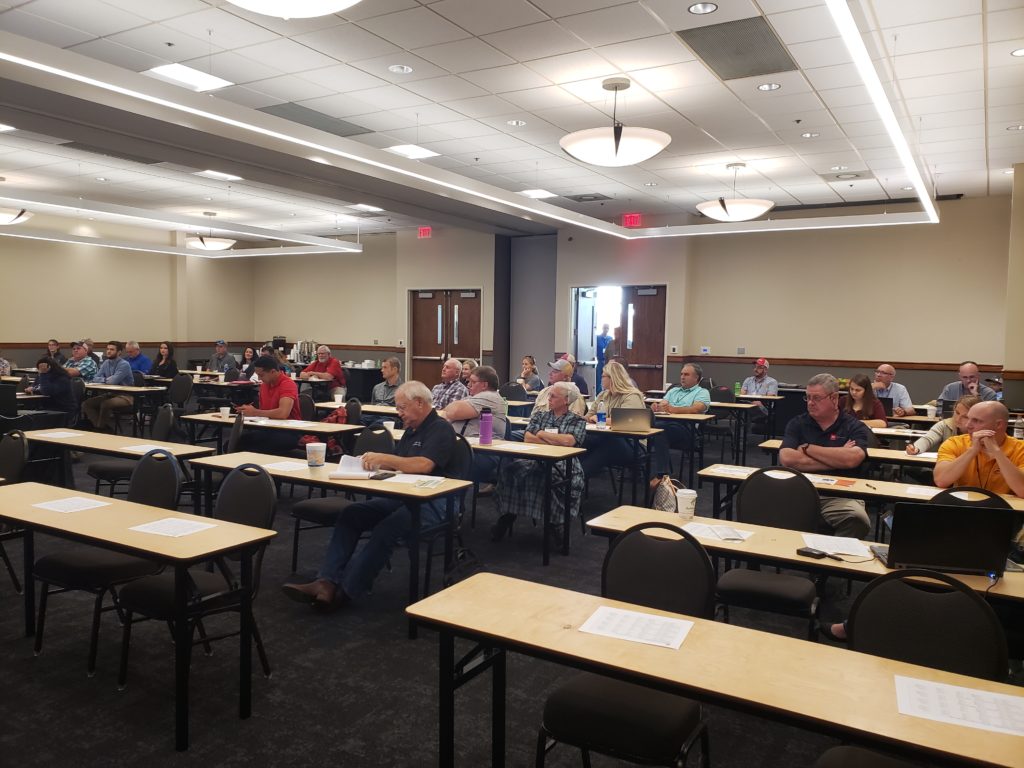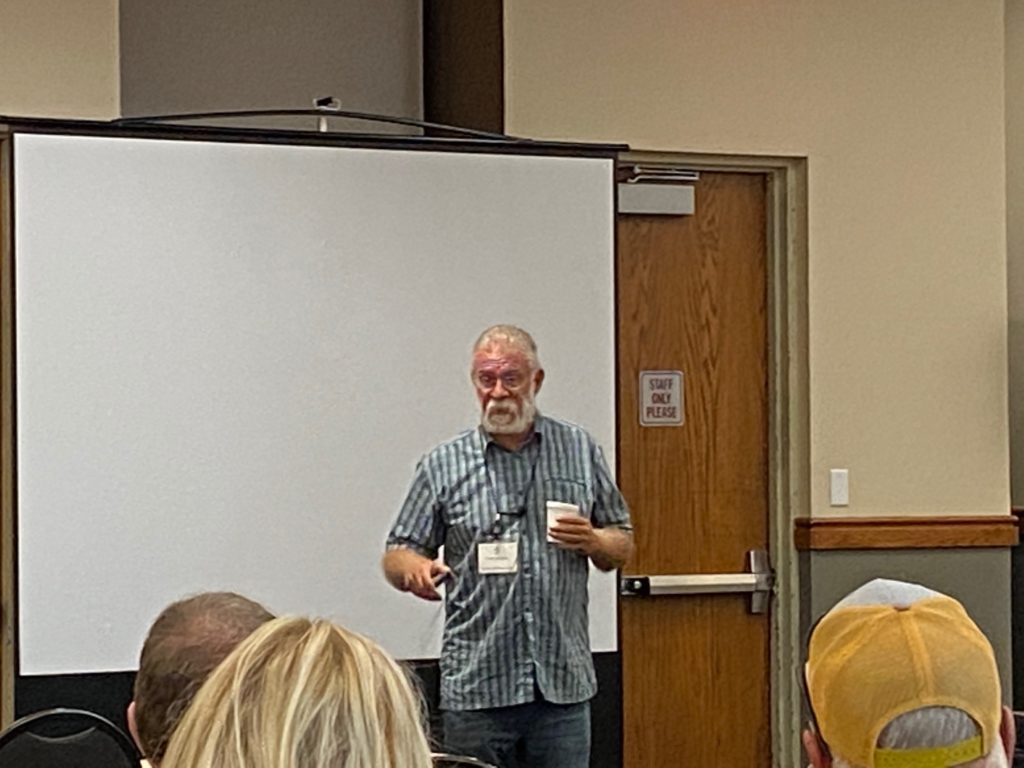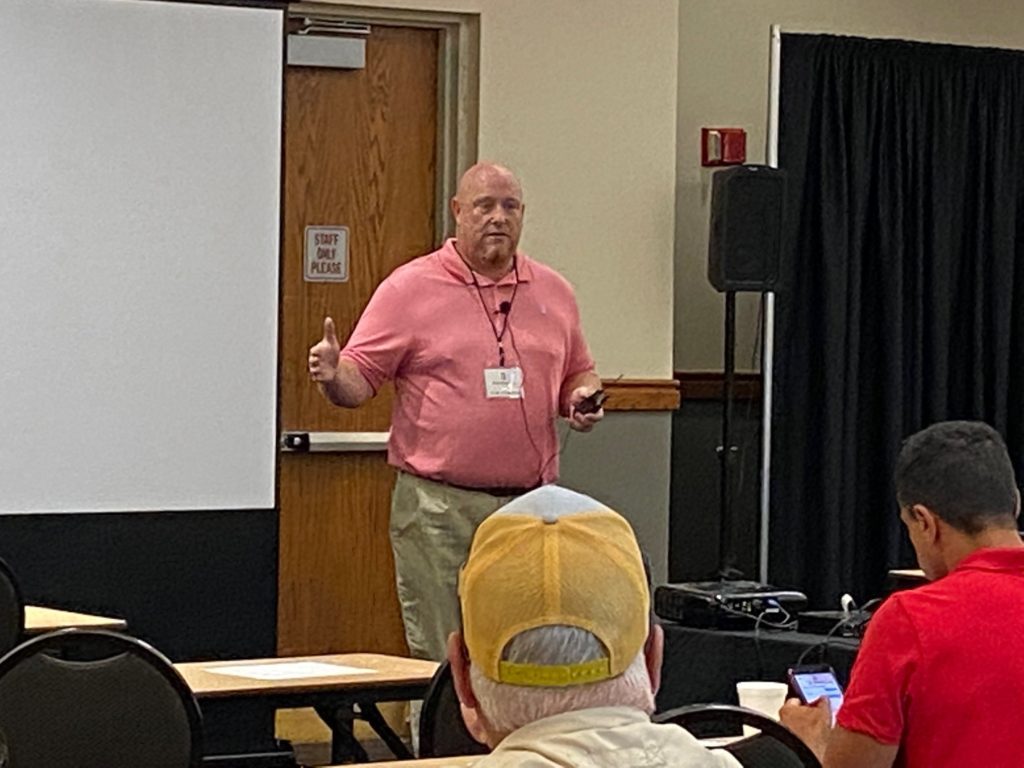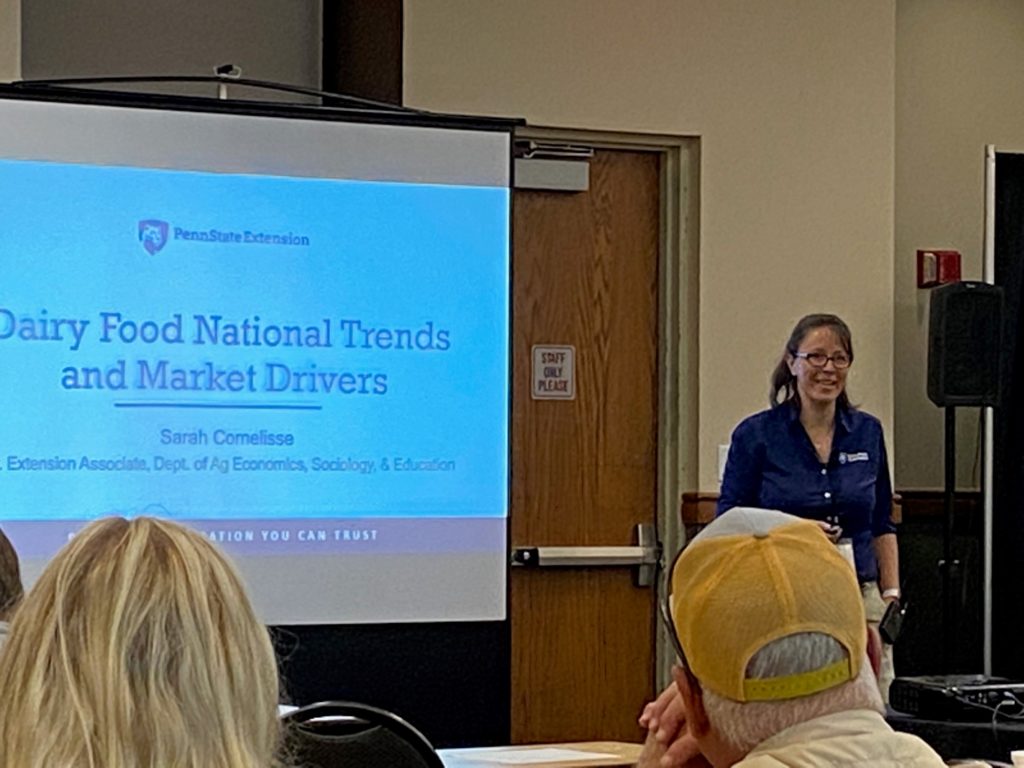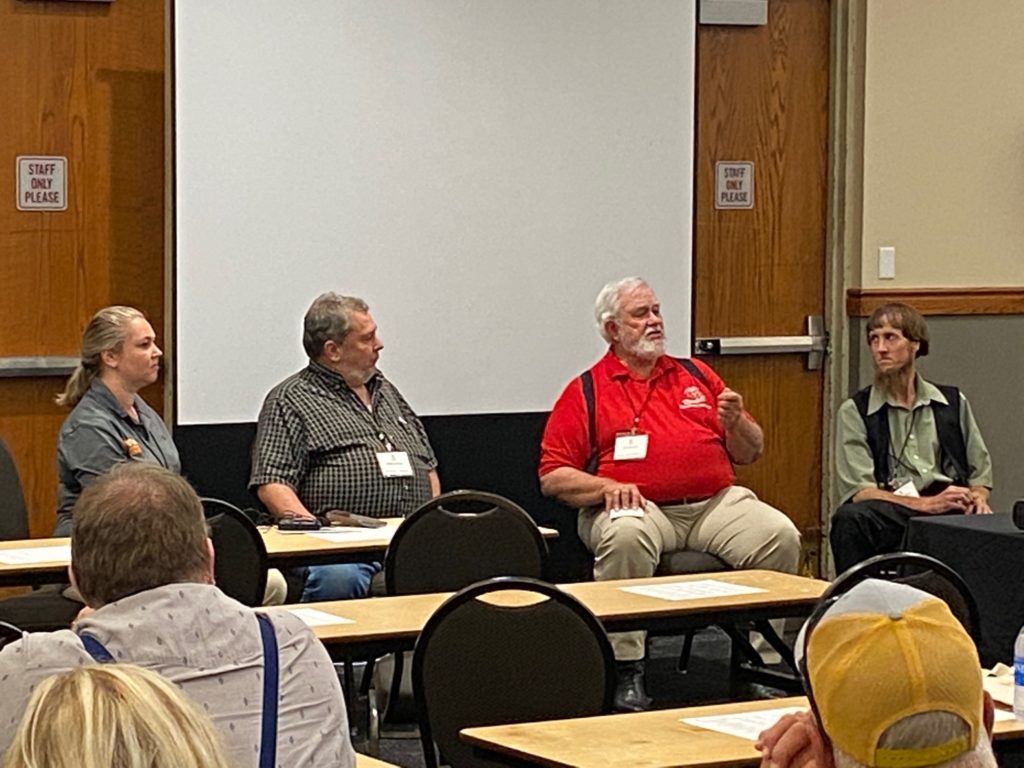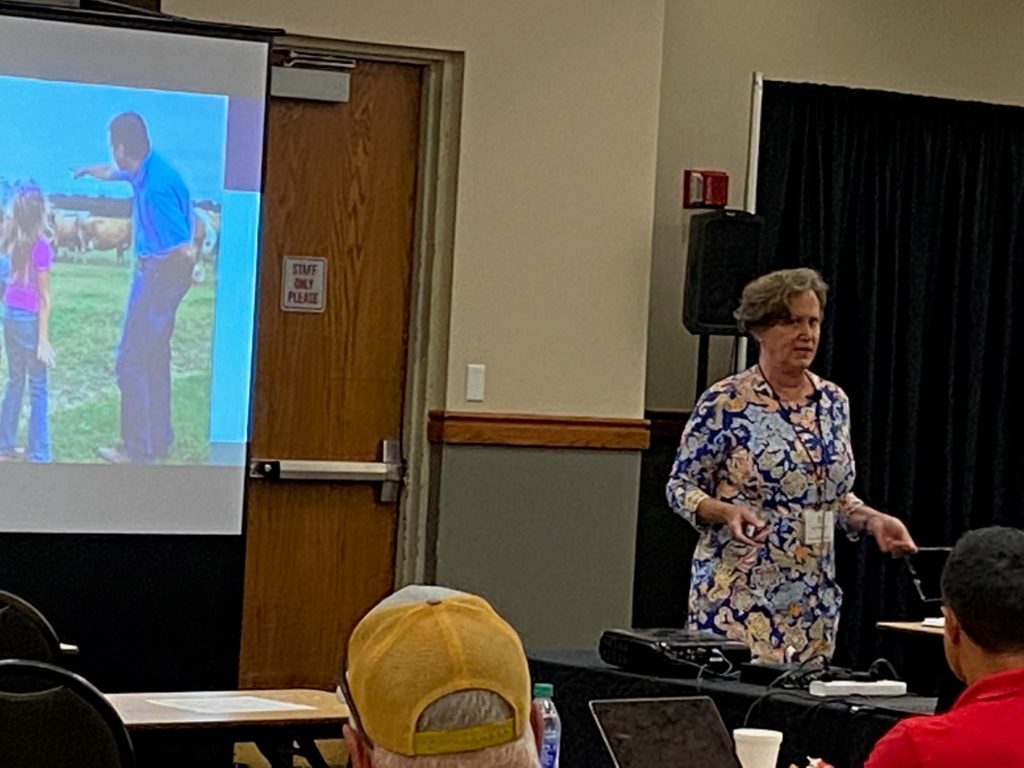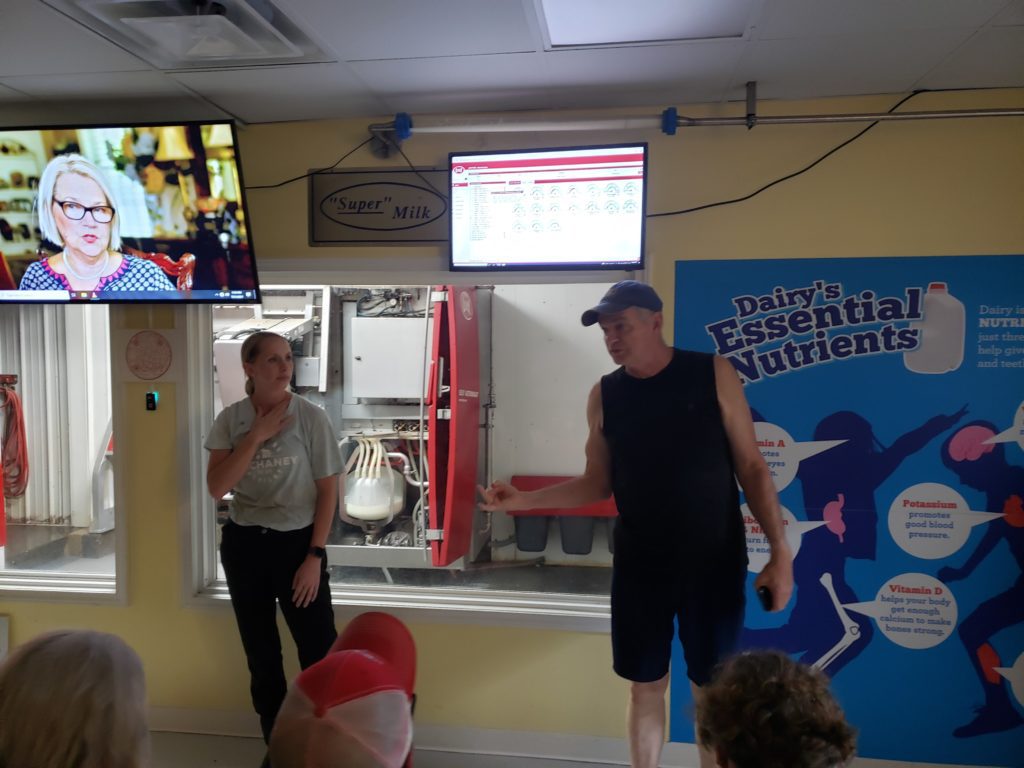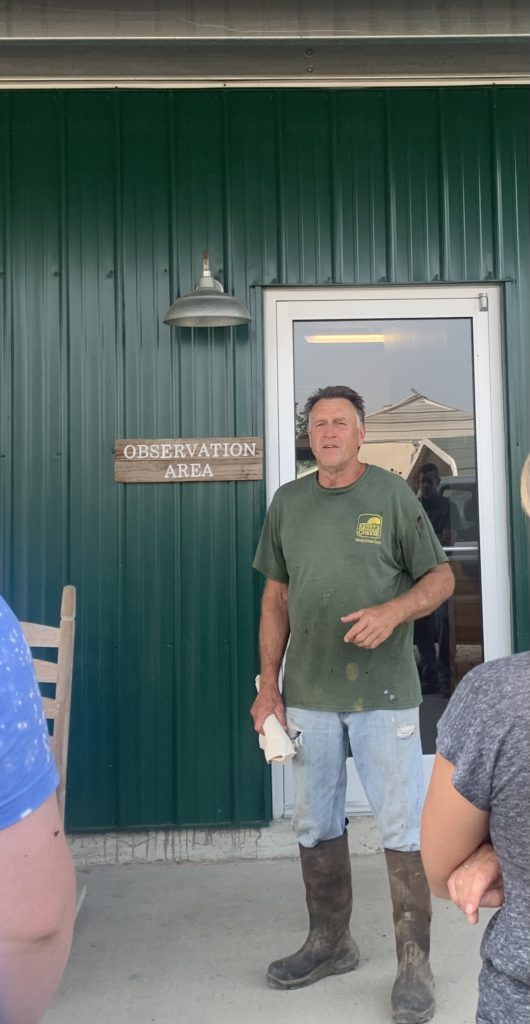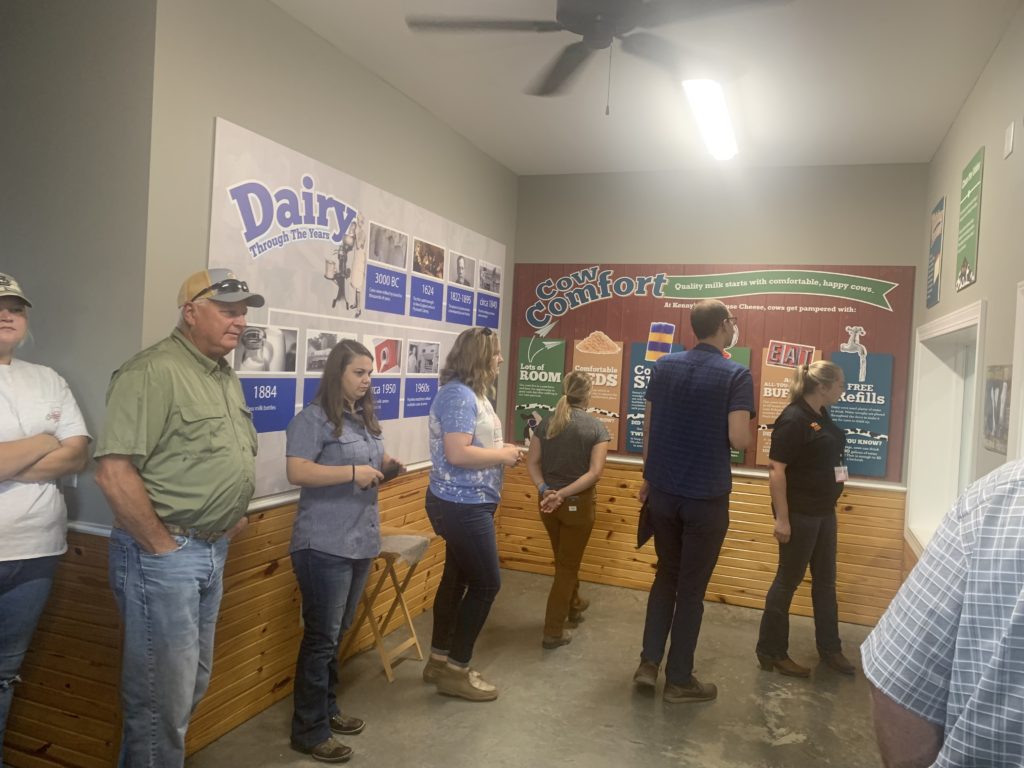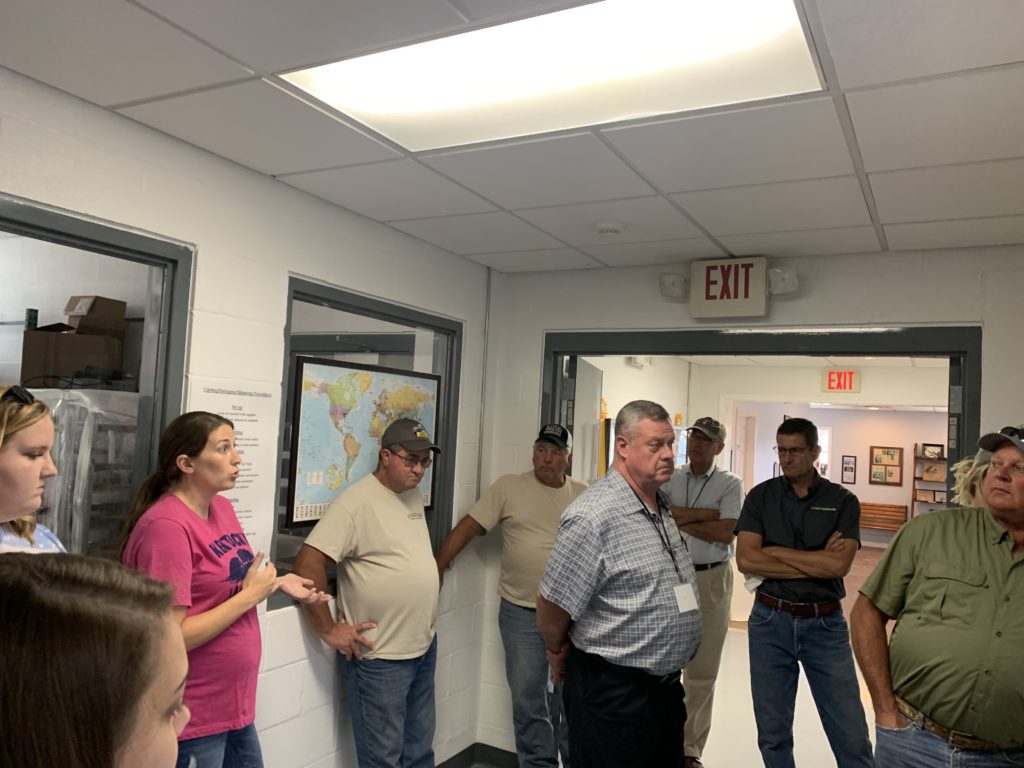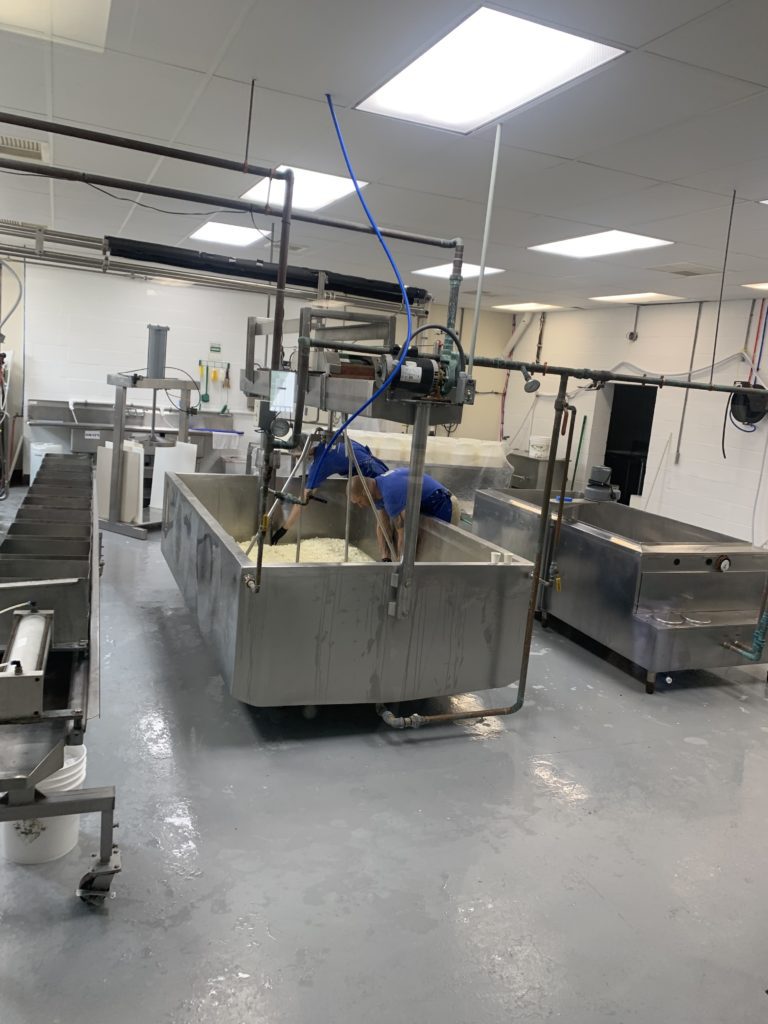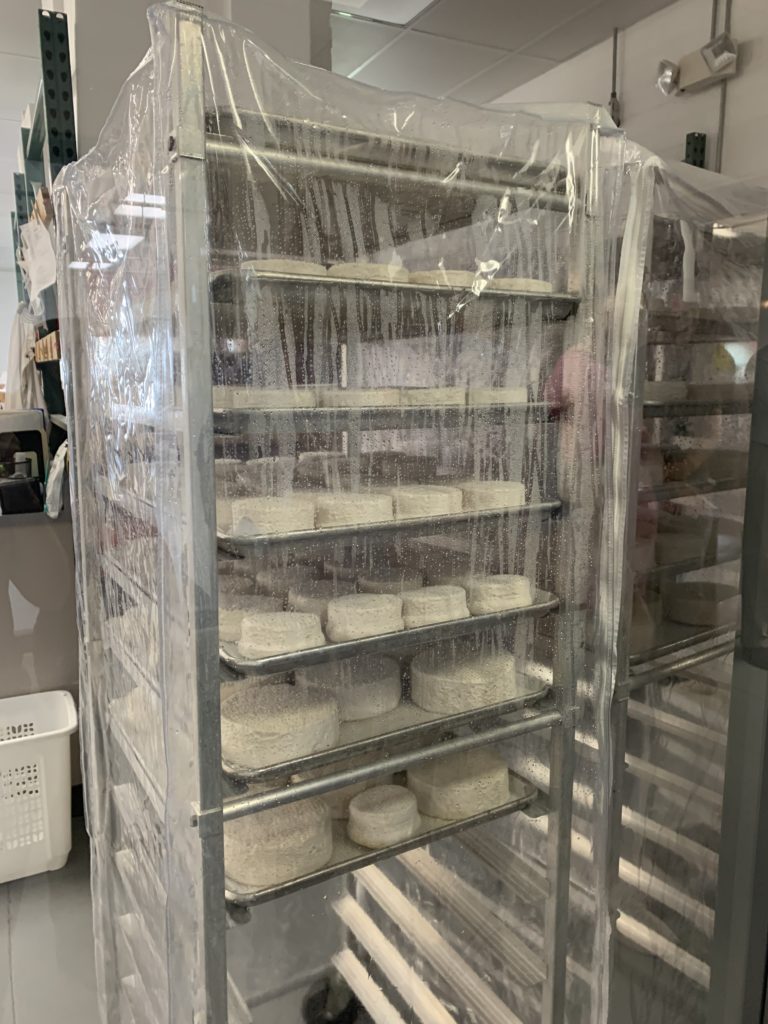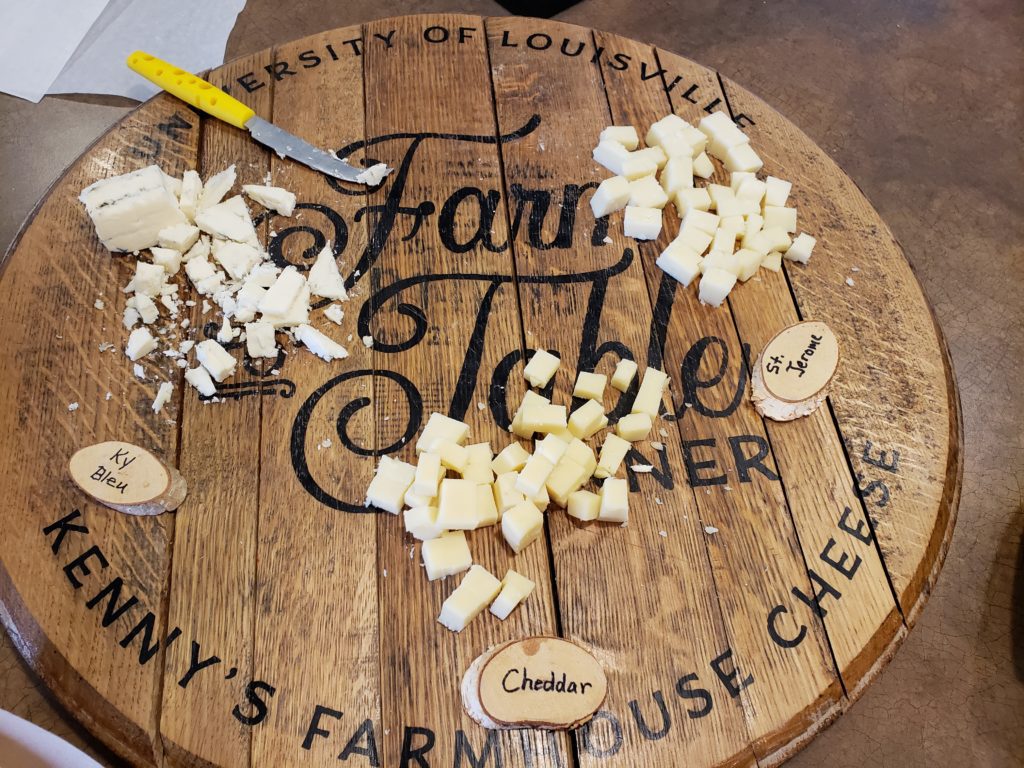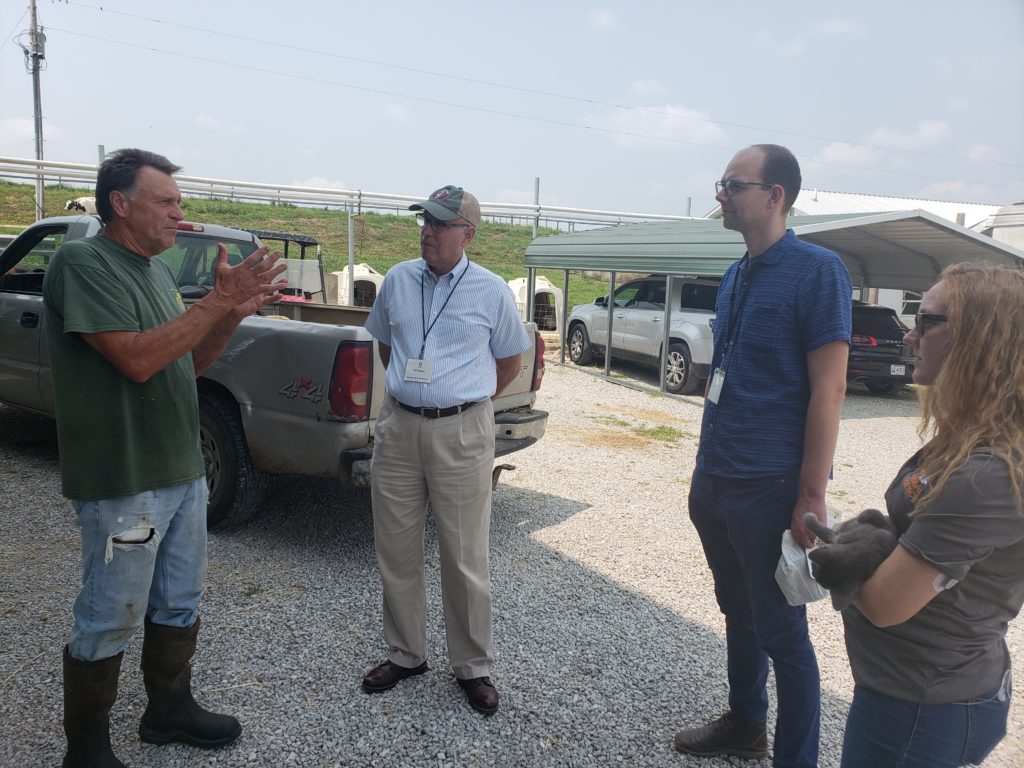
In a joint effort with Kentucky Dairy Development Council, the University of Tennessee hosted their second annual Value-Added Dairy Conference in Bowling Greene, Kentucky, July 21st to 22nd. Over 70 dairy industry members between Tennessee, Kentucky, and North Carolina attended the daylong conference either in person or online.
Dr. Liz Eckelkamp kicked off the morning with a welcome to the participants and speakers. The first speaker was Brian Lacefield, the Executive Director of the Kentucky Office of Agricultural Policy, who discussed various grants and funding resources for value-added producers. Among these are the “Shared-Use Equipment Program,” the “KADF project grants and loans,” and the “Meat Processing Investment Programs.” There are also Kentucky Agricultural Finance Corporation loan programs such as the “Agricultural Processing Loan Program (APLP),” the “Beginning Farmer Loan Program (BFLP),” and the “Diversification through Entrepreneurship in Agribusiness (DEAL) Loan Program.” These programs are Kentucky specific, but Tennessee farmers can contact Dr. Liz Eckelkamp or visit the Center for Profitable Agriculture, Tennessee Department of Agriculture, or UTDairy to view funding opportunities.
Following Mr. Lacefield’s talk was Brent Lackey, Kentucky Center for Agriculture and Rural Development, discussing business plans and market studies. This topic would reoccur throughout the day. Mr. Lackey had critical steps for starting or expanding a value-added dairy enterprise: 1) set goals, 2) do research, 3) funding, 4) be honest with yourself, 5) business plan, 6) launch. He also posed questions to ask before getting into processing:
- What volume will you process?
- Where will excess milk go?
- What products will be made?
- Where will they be marketed?
- Who will manage the operation?
- What are the regulatory requirements?
- Where will the plant and retail locations be?
Brian McAnnelly and Frank Jackson with the Kentucky Department of Agriculture (KDA) led a discussion from the regulatory side after a short break. The Interstate Milk Shipper List (IMS) was a hot topic encouraged by the regulatory agents for processors considering purchasing or shipping milk or finished products across state lines. Kentucky and Tennessee’s Departments of Agriculture respective state’s regulations align with FDA’s to ease confusion for their processors. Any regulatory questions should be directed to the Kentucky Department of Agriculture, Tennessee Department of Agriculture, or North Carolina Department of Agriculture & Consumer Services.
Next, Sarah Cornelisse from Penn State Extension discussed trends in dairy consumption documented by USDA and her research. Trends show that ice cream consumption has slowly decreased, and cheese has steadily increased with a spike in the last two years. She noted that consumers are trending towards drinking whole milk over 2% milk. Her research suggested that 53% of survey respondents were willing to pay more for locally sourced milk, and of that, 54% of this group were males, and 64% were parents. She also noted that 74% of respondents agreed that where the product is produced impacts consumers’ decision to try new cheeses. Finally, she pointed out that all dairy product sales increased with the pandemic. Milk unit sales increased 1.5%, cheese increased 9%, ice cream and sherbet sales increased 8.4%, other frozen novelties increased 9.1%, and butter increased 7.8%. Cornelisse noted that due to COVID-19, people are buying local and cooking at home more frequently, providing a marketing opportunity for our small producer-processors.
Following lunch, a panel with three processors was held. First was Willis Shrock from JD Country Milk in Logan County, KY, which produces bottled milk. The second was Terry Rowlett with Rowlett’s Milkhouse Creamery in Campbellsburg, KY, which sells butter, cheese, ice cream. Lastly was Omar Stoltzfus with Country View Creamery in Trenton, KY, a community venture specializing in processing community milk into cheese. Many good questions came from the audience regarding retirement plans, marketing strategies, challenges they faced during development, workforce, and general advice and experience. Each processor echoed that coordinating between the different contractors and the regulatory agencies was a challenge. Takeaway points from these three experienced processors were:
- Consider the liability and risk of placing a retail store on your farm
- Think of a retirement plan and line of succession early on
- Take processing classes even if your equipment won’t be the same
- Be relentless in marketing your product
- Work closely with your state’s regulatory agency
Each processor had their closing thoughts for the participants. Omar Stoltzfus remarked that you don’t realize how much money is tied up in inventory for aged cheese, so keep that in the back of your head. Willis Shrock said that the reward of a job well done outweighs the little money made from the venture. Terry Rowlett noted that you need a reliable labor force, whether family or not because you will never work a 40-hour week as a processor. Expect that processing will take around 50% more time than you anticipate.
Next was one of two talks given by Ann Wilkinson with Origin Farms Consulting. This first talk focused on exploring and defining the details of the business’ vision and thinking of a business concept. She encouraged the audience to consider where they want to be in the next year, five years, and ten years. Relating to their business vision, what do they want to process, and how? Her most emphasized point and the most often overlooked by prospective business owners was an exit strategy. Will the processing facility be passed down to a family member or friend? Will you apprentice someone, or will you sell it when you’re ready to retire? Once these questions are answered, the next step is to research the business, market, and potential competitors. Once research has been done, you need to describe the product, your market, operations, management, staffing, financials, identify risk factors, and your exit strategy. It would be best to consider what you will make, how, where it will be stored and distributed, plan for expansion and marketing.
Following a break was Eric Goan, with Bluegrass Ingredients, discussing the ins and outs of a processing facility. Like the other speakers, he emphasized the need to reflect on why this type of venture is being considered. Mr. Goan gave plant layout examples and discussed the need for good management practices and what safety precautions should be in place to ensure an efficient and well-functioning dairy processing plant. Milk entering the plant should undergo tests to ensure quality. Among these tests are a standard plate count (SPC), direct microscopic count (DMC), somatic cell count (SCC), drug residue, lab pasteurization test, freezing point, butterfat, receiving temperature, and smell test. Sanitation standard operating procedures (SSOP), standard operating procedures (SOP), and food safety plans should all be enforced.
After Mr. Goan’s talk, Ann Wilkinson’s final talk discussed 3rd party determinations or opinions on the viability of a business or expansion launch, known as feasibility studies. She walked the audience through the different parts of a feasibility study: 1) the author, 2) the executive summary, 3) the review of the business plan or concept, 4) the review of the feasibility, and 5) the appendices. When selecting an author, a potential business owner should seek someone who works in the industry and has no conflicts of interest; AgMRC has resources regarding feasibility studies and how to find a consultant to perform this task. The executive summary contains the author’s conflict of interest statement, a declaration of payment of services, a site visit statement, and a brief overview of the feasibility study components, including marketing, economics, product details, management, and financials. The review of the business plan or concept and the feasibility discuss the previously stated categories in depth. The feasibility study concludes with an appendix which includes any additional information and references not listed.
Dr. Liz Eckelkamp rounded out the day by giving thanks to all the attendees, speakers, and staff who helped with planning, prepping, and running the conference. Following this was a visit to Chaney’s Dairy Barn for an educational tour and dinner. The farm tour allowed visitors to glimpse the robotic milkers and a talk with Elizabeth Lunsford about her processing procedures and business. Afterward was dinner and ice cream served by Chaney’s Dairy Barn.
Those interested were invited to tour Kenny’s Farmhouse Cheese the following day. Participants were first greeted by the signature attraction of the facility, the kittens, before being given a tour of the barn and bed and breakfast apartments that overlooked the barn by Kenny. Attendees were able to see a compost bedded pack barn with robotic milkers, manure and feed pushers, and brushes. His farm store manager, Marissa, gave a tour of the cheese facility and a cheese tasting. After viewing the cheese processing facility and seeing the process in action, the head cheesemaker, Cory, came out for a Q&A session on cheesemaking. Following the Q&A session, participants could taste some of Kenny’s famous cheeses, including their blue cheese, Kentucky Bleu, and repeat customers’ favorite, Saint Jerome.
This year’s Value-Added Dairy Conference was packed with informative guest speakers and a look into some successful Kentucky value-added dairies. Stay tuned for details regarding the 2022 Value-Added Dairy Conference; we hope to see you there!
